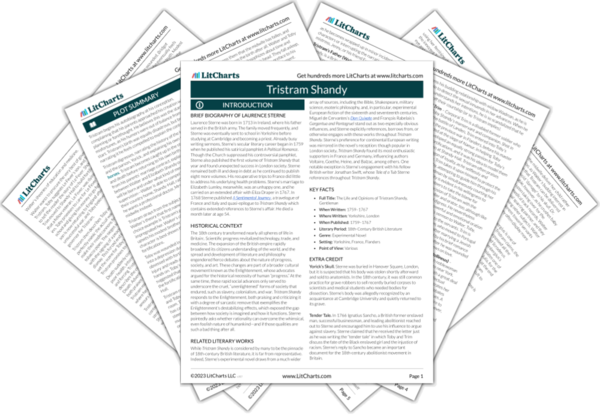Tristram’s faux-travelogue of Calais mimics the standard forms of traveling, starting with a brief history and then listing the city’s most famous monuments. In typical Shandean fashion, Tristram becomes caught up in minutiae, like the difference between the English and French words for “square”— unlike in English, the French words for the shape and the urban open space are different. Tristram’s recounting of Calais’s military history recalls Toby and Trim’s campaigns on the bowling green.
